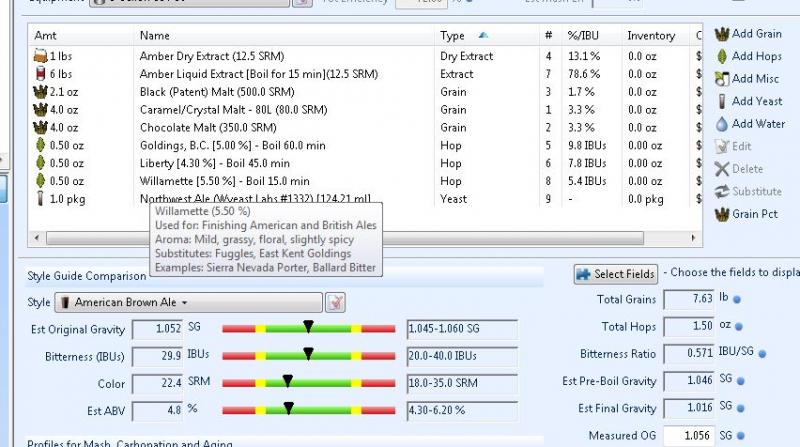scottvin
Well-Known Member
So, I decided to test out my new turkey fryer and 9 gallon pot yesterday.
I also was excited to make the Caribou Slobber recipe from Northern Brewers.
After many attempts with two different turkey fryers, I finally got the boil going.
I bought the 9 gallon pot because I wanted to be able to do full boils. I added 5.5 gallons to the pot and started the fryer.
When the water hit 150°, I threw in the 0.25 lbs Briess Caramel 80L, 0.25 lbs Fawcett Pale Chocolate, 0.125 lbs Black Malt and let the temperature rise to 170°. I then took the grains out, let them drain and continued on my goal of 212°.
Once I hit boiling, I threw in the 1 pound of Amber DME and US Goldings. At 45 minutes, I threw in the Liberty, and at 15 minutes I threw in the 6 pounds of Amber LME and the Willamette hops along with 1 tsp of Irish moss. At flame out, I started the wort chiller and it took about 18 minutes for the wort to get under 70 degrees. I noticed a lot of stuff on the top of the wort at this time, I assume it was a hot/cold break?
After the wort was cooled, I used a wine whip for aeration. I then took a hydrometer reading - 1.056 and had a taste of the cooled wort - it seemed quite sweet, is that normal?
I pitched the yeast starter that was on the stir plate for the last 12 hours. When I woke up today, I had bubbling in my blowoff tube, placed in a growler, every second or so.
One thing I did notice was not that much water seemed to boil off, only about .3-.4 gallons which seemed low.
Any comments? Things that I could improve?
Thanks!

I also was excited to make the Caribou Slobber recipe from Northern Brewers.
After many attempts with two different turkey fryers, I finally got the boil going.
I bought the 9 gallon pot because I wanted to be able to do full boils. I added 5.5 gallons to the pot and started the fryer.
When the water hit 150°, I threw in the 0.25 lbs Briess Caramel 80L, 0.25 lbs Fawcett Pale Chocolate, 0.125 lbs Black Malt and let the temperature rise to 170°. I then took the grains out, let them drain and continued on my goal of 212°.
Once I hit boiling, I threw in the 1 pound of Amber DME and US Goldings. At 45 minutes, I threw in the Liberty, and at 15 minutes I threw in the 6 pounds of Amber LME and the Willamette hops along with 1 tsp of Irish moss. At flame out, I started the wort chiller and it took about 18 minutes for the wort to get under 70 degrees. I noticed a lot of stuff on the top of the wort at this time, I assume it was a hot/cold break?
After the wort was cooled, I used a wine whip for aeration. I then took a hydrometer reading - 1.056 and had a taste of the cooled wort - it seemed quite sweet, is that normal?
I pitched the yeast starter that was on the stir plate for the last 12 hours. When I woke up today, I had bubbling in my blowoff tube, placed in a growler, every second or so.
One thing I did notice was not that much water seemed to boil off, only about .3-.4 gallons which seemed low.
Any comments? Things that I could improve?
Thanks!



